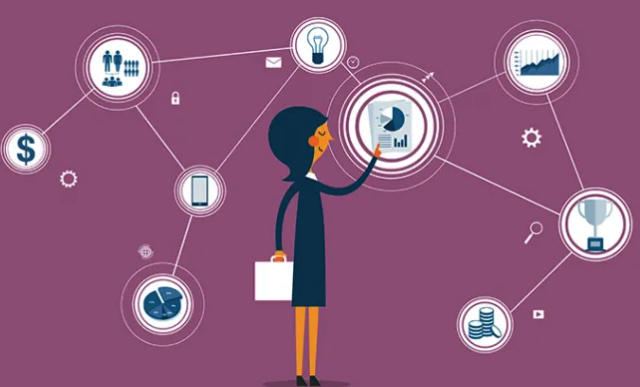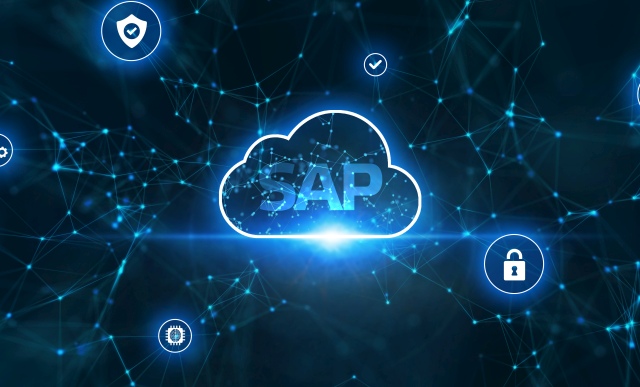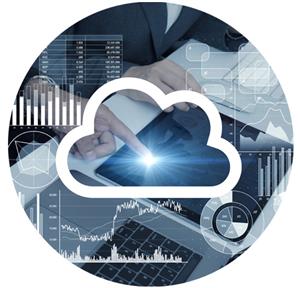Björn Goerke on Gaining a 360-Degree View of the SAP Customer Experience in Today’s Multi-Cloud World
Q: Ray Wang, Constellation Research
A: Björn Goerke, SAP Cloud Platform
Explore related questions
Q: Björn, the CTO role has completely changed. It is really, really different. The landscape is crazy. The integration is all over the place. The technologies are changing fast. The business models are changing at the same time. What is so hard right now? What are things you would suggest to a CTO? What do they have to do?
A: I think for everybody it’s the same: the landscape is changing extremely quickly. There’s new tech stuff coming up all the time — new trends, pressure coming from the outside. I think what every company needs to focus on first of all is the customer. It’s not your biggest competitor which will tell you what to do. It’s not coming from internal. Everything will be driven from the customer side. Customer experience and how you can serve them better, that’s what’s driving companies these days.
Q: That’s a really good point. You’re not competing with the competitors you used to compete with.
A: Absolutely.
Q: I think a lot of people are trying to figure out what that means in their business model.
A: Yes.
Q: Talk about some competitors that have shifted their customers — shifted with their customers, and more importantly shifted their business model.
A: I think what we’ve all seen with those customers who have successfully done it was what I think is the basis of digital transformation, which is the buzzword everybody uses and can’t take anymore, is at the end it’s about customer experience and an innovation culture. So it’s really about how do you better understand what customer needs are, how do you get a complete picture, a 360-degree view on your customers’ needs, understand your products and services and how they resonate with them. So it’s a lot about taking the information that is available, which is largely collecting data that you have today already in your landscape or that you start collecting through IoT, through social networks — the whole big data topic – and putting analytics and machine learning on top. So it’s getting insights out of all the data points that you have today, and then be agile and react to those changing customer needs that you see today.
Q: And that’s important because today you can’t do digital transformation without having data. Data is the foundation of that. Data determines what you do next. It helps you predict what happens. It helps you forecast. That becomes one of the big areas. Data is a hard part for a lot of organizations though, right? With the cloud, with on premises, with all these new different forms of delivery, what should they think about in terms of taking that approach to data to making sure they are OK?
A: I think overall, there is no shortage of data, no matter what industry. If you go to the customers, they have data all over the place, sitting in pockets, sometimes it’s isolated. Individual departments are trying to take hold of whatever they have and not share it. So there’s a lot of concerns about data privacy, data protection, access rights, and things like that. I think very important to do to data is what ERP did to processes is provide this kind of governance and structure on who can access the data — think about authorization, think about where the data is going – and I think that’s a large part also of what we’re investing from an SAP side is bring you the governance layer on top of the corporate data that you have today, but also incorporate outside data sources that you have with social networks, Facebook, Twitter – where you’re getting excited about customer sentiment and bring that all together. Then with a certain layer of governance which makes sure that you are complying with GDPR and other requirements that we see popping up all over the place in recent months – make sure that you can access the data in a meaningful fashion, in a compliant fashion. And once you can do that, then you can put it to work in your business processes.
Q: You’ve been advocating a lot for common data models, common data frameworks to help organizations with that. That helps to some extent. But the second part that you’re talking about is really important. We actually see that 60% of mission-critical data in the next four-to-five years is going to be outside your four walls. And that requires a different skillset of making it easier to bring that data, ingest that data, and bring it to life. As companies are thinking about that, where does the cloud play a role in this? And how do you see the cloud shaping in the future?
A: How customers have been looking at cloud has dramatically shifted over the past years from originally just shifting workloads from an on-premises data center into some more scalable and cheaper infrastructure. I think that has completely changed toward looking at cloud more as an innovation driver where cloud actually brings you agility and speed that you couldn’t get from all those elements that you need to get your business going or operating than in an on-premises world. It’s really the way how you get access to as you say “outside data” — if you need to tap into your business network, it’s not just the data you have in your corporation, it’s your business network that you are interested in. It’s as I said social networks, it’s the whole topic of big data out of Internet of Things scenarios. Where you start getting a more real-world view or real-world validation of what you think the business is actually doing, I think that’s where the whole topic of cloud and ubiquitous access to data, to processes, has become super important for companies. Those who know how to leverage those elements are usually the ones we see at the forefront of innovation.
Q: That was a really important point here. We have gone from looking at the cloud as a cost-savings tool to something that actually expedites DevOps. We looked at the cloud as being a way to actually handle something as simple storage to something being able to handle data in motion. All these things are changing the way people access and actually move forward. One of the biggest fears everyone has with the cloud right now is vendor lock-in. Where does multi-cloud and vendor lock-in and different techniques come into place that CTOs should be thinking about?
A: The big topic for many customers is where you actually store my data. If it becomes big data, for many of them, it’s not their own data centers anymore. It’s moving into the hyperscale cloud providers, whether it’s Amazon or Microsoft. So that’s happening. But getting the data in is one thing. Getting it out again is the other thing. The interesting question is – depending on where you go, and customers choose one or several of those providers these days – how can you bring the workload to your data sets? Because moving it around is definitely not an option. That’s not viable. But how do you bring the workloads there? What has become very important for us at SAP is how can we provide you with a platform as a service offering that works in a multi-cloud environment that doesn’t lock you in onto a particular vendor because that vendor owns the whole hardware spec from the deepest technology below up into the data center and the software stack. A platform allows you to choose whether you want to run the workloads for SAP scenarios and SAP business processes on Amazon or on Microsoft or on Google Cloud Platform, or on a vendor in China. That’s super important to us. In the past, it has worked very nicely for SAP to be independent and agnostic to the underlying infrastructure. So in the early days with client server, SAP could work with any database. We could work with any operating system with any hardware vendor, and that really helped support our customers in making their choice on where they want to run their workloads. And we are doing the exact same thing now — with our platform-as-a-service offering with SAP Cloud Platform — going into such a multi-cloud strategy, supporting customers where they have their workloads. And that’s very unique in the market.
Q: I’m smiling because I feel like we’ve gone full circle back to 40 years ago. Think about it. What is cloud? It’s mainframe time-sharing. What is a SQL database? It’s name value pairs. What’s a mobile device? It’s almost VT100. The only thing we are missing is a protocol for token ring, right? That’s the future.
A: I think there’s common patterns repeating.
Q: But it’s also a big flashback, right? Now I can choose any database, any cloud platform, anywhere to process the data, and choose the workloads.
A: You mentioned mainframe. I think what’s a dramatic different shift these days is the move toward more microservices-based architectures. More modular you are kind of picking and choosing and plugging together so it’s much more orchestrating. Where really low level coding or computing or being constrained by a monolithic single-vendor approach as you would have been with a mainframe, and I think that’s very different. What we’re also seeing is that, with that world — which gets extremely complicated if you were to require everybody to go down onto the technology level — there’s more and more need for easy-to-consume services, which are provided as a service, standardization via APIs, so you need to accommodate that everybody allows you to pluck things together. Common data models are becoming more and more important, which is why we’ve joined the Open Data Initiative. You need alliances. Nobody is doing innovation alone. It’s about a partner ecosystem. It’s a big partner play that you need, and platforms play an essential role in that context. At SAP, we are working toward providing a business platform so taking the essential data assets of our applications – whether you talk about the customer, whether you talk about the worker (which might be your employee or contingent worker), the whole topic of product of asset ability expose those elements on the platform so that you can easily integrate your solution from SAP or from third-party vendors on a common data model. That is becoming extremely important as you extend your business processes beyond your corporate network into business networks and the larger cloud ecosystem.
Q: We are also seeing a big trend among clients. It’s a concept called infinite ambient orchestration. Back to your microservices point — headless, intention-driven microservices that are constantly being reused – ambient, because all the data and the context around at that data (at the edge and toward where you are) shores up the next best action. And orchestration, because you can’t just do it within your own four walls. It’s across processes. It’s across organizations, and more importantly, value networks. So those things are coming together. So this isn’t your first tour of the valley. You’ve been here multiple times. Tell us a little bit of what it’s like coming back.
A: I like the vibe here. The level of innovation that’s happening. No matter where you go – if you sit somewhere in a café like here or if you’re in a restaurant or somewhere on the street – there’s always somebody, if you listen, they are all talking tech. They’re all talking innovation, the whole vibe that is up here is just amazing. That’s why I decided to move here and work as CTO of SAP with our partners and the ecosystem here in the valley around startups to really bring that together, bring that into the SAP world as well and help our customers consume those innovations.
Q: Three years from now, what does the SAP Cloud Platform look like?
A: We are massively going for the expansion into this multi-cloud world. We strongly believe that hybrid cloud will play a major role in the coming years. If you also follow what the hyperscalers are doing – and Amazon was the last one to announce now also an on-premises hybrid support model – we strongly believe that the world will remain hybrid for a number of years. We are going that same direction with the SAP Cloud Platform. We have announced partnerships with IBM and Atos already and there will be more coming. That’s one important thing. So we are totally committed to the multi-cloud strategy driving the choice for customers as they demand. But then what we are more and more focusing on is business services and business capabilities. You mentioned microservices as well. It’s really about business functionality that customers expect from SAP. We’re an enterprise solutions company. So with our world spectrum of 25 industries we support, all the lines of business within a corporation — from core finance to HR to procurement, you name it — of course the level of functionality that we can expose via APIs and microservices on a cloud platform to allow customers to quickly reassemble and orchestrate customer specific differentiating solutions, I think there is no other company out there in the market that has the opportunity to deliver that broad-scale, worldwide to our corporate customers. And that’s where we are heading. That’s where we are investing. We are working on simplifying the consumption of all of this. As I said, it’s about low-code environments. You need to be able to plug and play and not always force people to go down into the trenches and start heavy coding. Beyond that, machine learning is all over on everybody’s mind. What we are doing is of course making sure that we can embed machine learning capabilities deep into the application solutions. It can’t be that every customer needs to hire dozens and hundreds of data scientists to figure these things out. The very unique opportunity that SAP has is of course take our knowledge in business processes, take the large data sets that we have with our customers and bring machine learning right into the application for customers to consume out of the box.
Q: Built in RPA?
A: Exactly. RPA big topic as well of course. We believe that 50% of ERP processes you can potentially automate to the largest parts within the next few years. So we are heavily investing in those areas as well.
Q: So we heard it here first. It’s going to be a hybrid world. It’s going to be multi-cloud. It’s microservice-centric around business processes. More importantly, it’s going to be connected to different types of networks. And the last piece – security – where does security come in?
A: If you think about the level of connectivity companies opening up their corporate environments more and more — cloud being on everybody’s mind, the whole idea to make access to information processes available to everybody in the company and in the larger ecosystem at any point in time, from anywhere – of course this kind of raises the bar that security has to deliver. So it’s a top-of-mind topic for everybody. A lot of new challenges also from an architectural perspective, how these things are built, how you communicate. But I think we have a long-standing history as an enterprise solution provider to know exactly what is going on there. There’s security. There’s data protection privacy that companies have to comply with these days. I think we are well positioned to serve our customers’ needs there.
Q: Well, welcome back.
A: Thank you.
Q: Nice talking to you.
A: Likewise.




